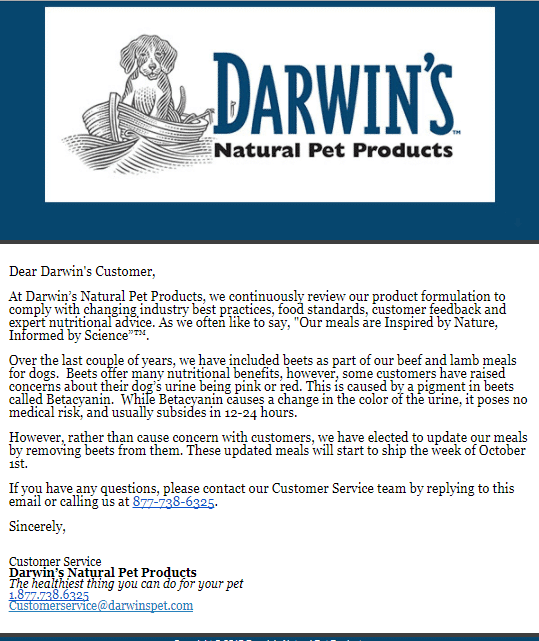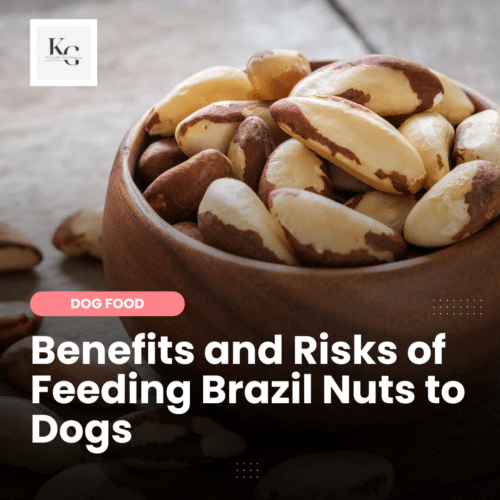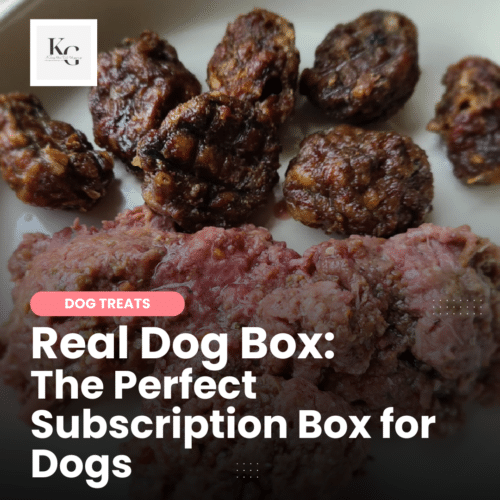Keep the Tail Wagging is supported by pet parents. I occasionally earn a commission (at no additional cost to you) when you click through an affiliate link to one of my favorite products. Thank you for your support. Read More
One thing I love about Darwin's Pets is that they respond to their customers. This morning, I received this email from Darwin's Pet.
Dear Darwin's Customer,
At Darwin’s Natural Pet Products, we continuously review our product formulation to comply with changing industry best practices, food standards, customer feedback and expert nutritional advice. As we often like to say, “Our meals are Inspired by Nature, Informed by Science”™.
Over the last couple of years, we have included beets as part of our beef and lamb meals for dogs. Beets offer many nutritional benefits, however, some customers have raised concerns about their dog’s urine being pink or red. This is caused by a pigment in beets called Betacyanin. While Betacyanin causes a change in the color of the urine, it poses no medical risk, and usually subsides in 12-24 hours.
However, rather than cause concern with customers, we have elected to update our meals by removing beets from them. These updated meals will start to ship the week of October 1st.
If you have any questions, please contact our Customer Service team by replying to this email or calling us at 877-738-6325.
Sincerely,
Benefits of Beets for Dogs
I'm anemic and since becoming a raw feeder, I've slowly transitioned to a pescatarian (I eat fish and other seafood, but no meat) so I often enjoy a meal of pickled beets to help with my anemia. While some people believe that beets have no nutritional benefits for dogs, I discovered a list of benefits.
- natural source of fiber
- high in Vitamin C
- The betaine offers cancer-fighting properties
- source of magnesium
- source of potassium
- source of manganese
- promotes a healthy immune system
- promotes a healthy heart
- promotes healthy blood sugar levels
But Beets are a High Glycemic Food
In the past, my concern about beets was that they are a high-glycemic food, rating at 64 on the index. I can remember in many raw feeding groups seeing raw feeders lose their minds if they learned that beets were an ingredient in a dog's meal. While beets are a high-glycemic food, they have a low glycemic load at 5.
What's the difference?
As I understand it, we want to avoid foods that increase our insulin levels because increased insulin levels promote weight gain and the risk of diabetes. However, it's the GLYCEMIC LOAD that can lead to higher insulin levels, not the glycemic index. Beets have a low glycemic load.
Long story short, beets don't make dogs fat.
Myths About Beets and Darwin's Pet Food
While dog food brands often add beet pulp, a by-product of sugar beets (not the beets used in Darwin's Pet Food), to their dry dog food, it's ultimately just a filler to provide fiber to help a dog's system processed an unnatural diet. I've heard that the reason Darwin's adds beets to their food is to give the illusion of blood so that people really feel like their feeding raw –
Some people have the misconception that the reason Darwin's adds beets to their food is to give the illusion of blood so that people really feel like their feeding raw – ummm, this isn't necessary because they ARE feeding a raw food diet.
Darwin's Pet doesn't use tricks to fool its customers. They don't have to because their food speaks for itself.
Why Remove the Beets from Darwin's Pet Food?
If I noticed that my dogs' urine was pink, I would immediately think they were peeing blood and I would freak out. Darwin's is taking away that concern and listening to the feedback they are receiving from their customers.
Once again, I'm blown away by how amazing this brand is to its customers.
Will Darwin's Pet Replace the Beets?
Yes! Darwin's Pet has replaced the beets with cabbage. Cabbage is great for digestive health and is filled with anti-oxidants.
How this Change Impacts My Dogs' Diet
Winter is around the corner and it's time for me to call Darwin's and start-up my monthly order of lamb. Energetically, lamb is a hot food and my dogs do well on it during cold weather months (keep in mind that following the energetic temperatures of food isn't a requirement in raw feeding).
The removal of the beets from the lamb recipe may seem like a fantastic idea since I have two dogs that are on a diet. No beets in the lamb recipe mean less sugar in their diet, right? WRONG! These aren't sugar beets, their regular beets, which are high in fiber, promote a healthy immune system, help regular blood sugar levels, and contain many nutrients.
So, ultimately, the change to Darwin's Pet's lamb recipe won't change my dogs' diet. Their food is still very nutritious and meets AAFCO standards for what's healthy for our dogs.
While AAFCO is an organization that is headed by executives of the big dry dog food brands, these are the only industry-recognized standards to go by – there are none for raw dog food. If a raw brand meets AAFCO standards by using all-natural ingredients, then I believe that their food is healthier because it lacks the synthetic (laboratory-created) ingredients used to make kibble. These fake ingredients are difficult for dogs to digest, leading to many deficiencies. On the other hand, a raw food diet that is all-natural is 100% easy to digest allowing dogs to absorb all of the nutrients.
Also, AAFCO standards take away one of the arguments vets have against raw feeding – that it's not balanced – making the diet more accessible to people new to raw feeding and struggling with their vet's negative sentiment over a biologically appropriate diet.
I'm excited to start their lamb order because my freezer is getting pretty bare at the moment.



















You forget that there is an entire industry devoted to raw feeding. I’m confident that we’ll see standards in the next 12 months as more people begin to feed raw. While the kibble industry may not be interested, those in the veterinarian and raw feeding community who are taking the thousands of questions from new raw feeders will want to have a standard for people to follow that goes beyond 80/10/10.
P.S. there will never be standards on Raw Feeding. Who would do it? It’s counterintuative to the industry. They want to sell kibble. What would they do with all of the dead animals and meat scrap. Our dogs are like living garbage disposals cleaning up the mess.
If that is important to you, check out Answer’s Pet Food. Not only do they not work to meet AAFCO standards, they pay the ridiculous fees to attend the meetings to protest those standards and more.
I need to swing by the pet store to grab some Probiotics. I’ll check to see if there are any brands that ‘don’t’ meet AAFCO standards and report back.
Thank you for your comment.
While AAFCO is an organization that is headed by the executives of the big pet food brands, the guidelines for what is healthy for dogs shouldn’t be dismissed because of that relationship. At the moment, we don’t have similar guidelines for raw feeding or home cooking and until those guidelines are created and released for all of us to follow, DIY raw feeders and commercial raw brands, we have AAFCO.
I look at it this way, if a food meets or surpasses the AAFCO guidelines, then (1) our dogs are getting what they need and (2) one argument against raw feeding is that it’s not balanced – Darwin’s took that away by meeting AAFCO standards. This takes away the fear for a lot of pet owners who are being told that raw is dangerous, which makes raw more accessible for more pets – this, to me, is a GOOD THING.
MAKING SURE OUR DOGS GET ENOUGH NUTRIENTS
Another way to look at it is that there are a lot of raw diets that aren’t balanced because we as raw feeders don’t know any better. We’re making raw on the fly and don’t realize that our diets are deficient in zinc (which can lead to eye problems) or manganese (which can lead to cruciate tears). While theoretically, our dogs should be able to get everything they need through a raw diet, we live on a very polluted planet and we can’t know how our environment and the rampant use of chemicals has impacted the animals we eat and feed to our dogs. DIY raw feeders recognize this and add foods like oysters (high in zinc and manganese) and other foods to cover the potential nutrient loss. We also understand that not all dogs are the same and while some dogs need raw fish 2 days, another may benefit from having it in their diet 3 days a week.
People who are new to the concept of raw feeding don’t necessarily have this knowledge and are coming off of kibble in an environment where they’re being told raw can kill their dog and harm their family. So a brand that meet AAFCO standards is preferred to one that does not – because if a brand isn’t meeting AAFCO standards may not be selling balanced foods. As a blogger, I’ve heard from many new brands and you’d be amazing at how many are selling meals with no offal and no bone (or bone meal).
RAW BRANDS THAT MEET AAFCO STANDARDS ARE HEALTHIER
The raw brands that are using all raw and natural ingredients while meeting AAFCO standards are healthier for dogs than kibble brands because kibble is filled with synthetic (lab created) vitamins and minerals which are harder for dogs to digest. Raw is easier to digest allowing a dog to take advantage of every nutrient in their diet.
I think it’s a mistake to dismiss AAFCO out of hand. Until we have standards for raw feeding we have nothing to go on that is industry recognized.
Great article, right to the end. That’s when you had to finish with, “Their food is still very nutritious and meets AAFCO standards for what’s healthy for our dogs”. AAFCO standards me nothing. AFFCO is a joke. They are in bed with the pet food companies and set those “standards’ to satisfy the garbage put in pet food. Darwin’s needs to distance themselves from AAFCO.
This was a useful post for me since I am a Darwins customer and didn’t receive this email. My dogs have both loved the Lamb formula but one of my dogs has refused to eat the Lamb we received in our last order a week ago. He’s been picking around something white in it (which I now understand is the change to cabbage). Just goes to show that every dog has different wants and needs. Mine loved the beets and no red pee, but the cabbage is a no-go for us.
Very great points that helped my understanding. I think I’ll just get some ‘for sure organic’ beets and periodically add small amounts as always! We already supplement with a bit of sauerkraut daily.
Darwin’s has replaced the beets with cabbage in their beef and lamb recipes. Cabbage is great for digestive health and it’s full of anti-oxidants. Their food still meets AAFCO standards for what is healthy for pets 🙂
Are you replacing the beets with something else for nutrition purposes?
I had a dog who peed red after eating a food containing beets, but what did I know? Of course we went to the vet and tests were done, etc. We stopped using that food, learned something new (the hard way). If my dog was actually peeing blood and needed medical attention, how would I know the difference, since she was peeing red from the beets? But now I avoid food containing beets unless the manufacturer will put in writing that the beets are non-GMO. Much of the mainstream sugar beet industry grows GMO beets to make cheap sugar for processed foods, and the pulp ends up in dog food. Thats why it’s high glycemic, not to mention dosed with glyphosate weed killer, with a growing body of evidence that it causes cancer, leaky gut, GI inflammation and male infertility. I think removing beet is the right thing to do, unless they’re organic.
So I’m feeling unclear and a little perplexed. Were the beets originally added for nutritional purposes? Were they removed for nutritionally sound reasons or sales based reasons due to the complaints of a few? Are they being replaced with a nutritional equivalent or now does the meal has less nutrition?